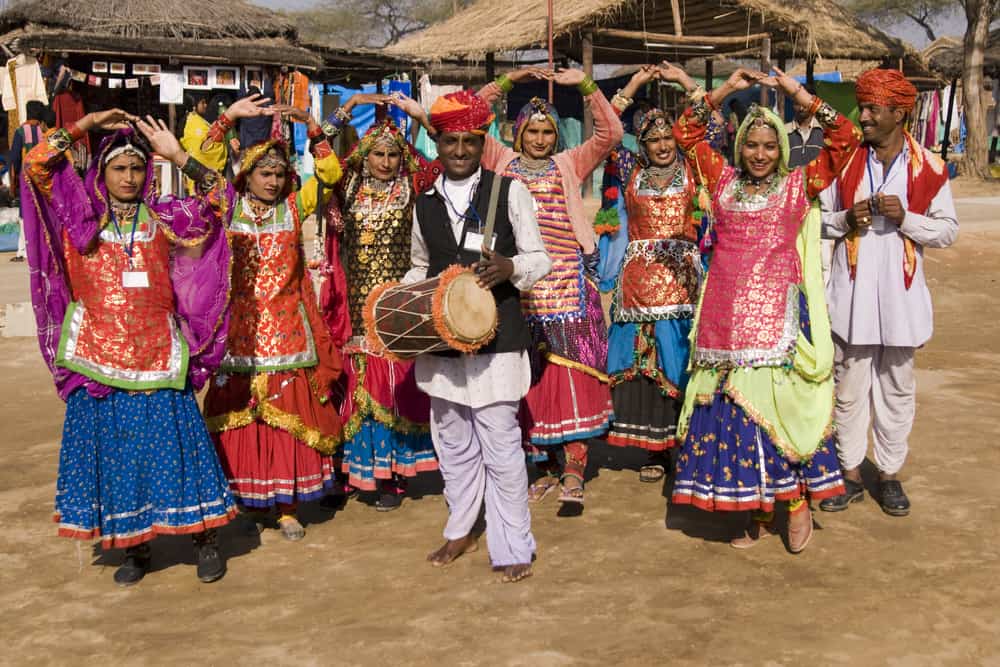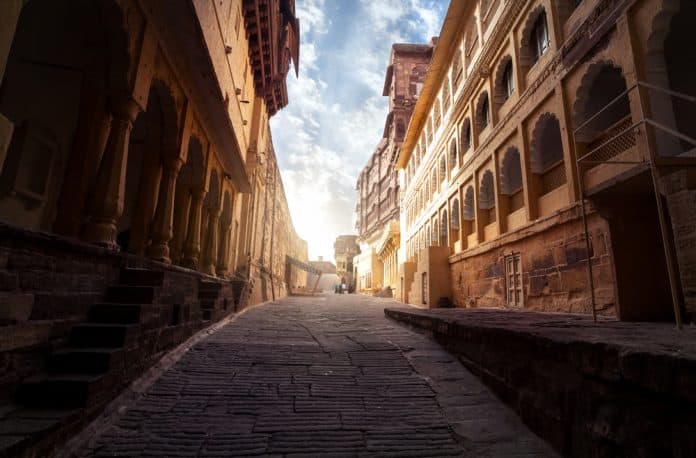Perhaps for most people who hear the word “Rajputana”, the picture that is immediately recalled to mind is that of turbaned men curling their moustaches or engaging in war with a “do or die” attitude to protect their legacy and honour. While this may be controversial and stereotypical at the same time, it is also what we have gathered in most part from movies and television. So, what exactly is the Rajputana culture all about and where did it start?

History and nomenclature
Rajputana is a term loosely associated with and derived from the clan name, Rajput. The Rajputs are a group of various small and big communities presiding under one umbrella term. But, historically, it has been believed that they are the direct descendants of the Kshatriyas or the warriors according to the caste system prevalent in ancient Vedic India. They were not just warriors, but rulers as well and their kingdom was named Rajputana – the land of Rajputs. This region comprises a majority of modern-day Rajasthan and some parts of the great desert in Pakistan.

These days, Rajputana is a name that takes into account not just the Rajputs and their community’s culture, but the culture of Rajasthan. The Rajputana region chiefly comprises cities such as Ajmer, Mewar, Jaipur, Jodhpur, Jaisalmer, Bikaner, and Udaipur – almost all the major cities of the state. This region was also known as a Princely State owing to the royal families, a few of which continue to rule in tandem with the Government’s policies, keeping in mind that India is now a secular, democratic republic.
Historical influences
In the true sense of the word, culture encompasses a variety of concepts including the people, cuisines, music and dance, arts and crafts, architecture and more. The Rajputana culture evidently sports influences from the day-to-day traditions and lifestyles of the camel herders and farmers who roamed the deserts, the stoic Rajput kings and brave warriors who ruled the region and protected it from invaders, the Mughals who attempted to and took over some of the region, the British agencies who diluted the powers of the Rajputs and many more. Having endured such a tumultuous history, Rajputana culture has still managed to flourish as effervescently as ever.

Architecture
Being a state full of castles, Rajasthan has some of the most iconic fortresses in the country and perhaps in the world. These fortresses do not just exhibit the Rajputana architecture, but owing to the Mughal invasions, some of them have Mughal iconography as well. The grand castles boast of signature towering walls several meters thick and several feet high, well-planned lighting and sanitation systems, step-wells and moats, tunnels and hideouts – you name it and they have got it. They were not only constructed to keep intruders at bay at all costs but to also host entire kingdoms within for ceremonious and festive affairs.

These castles are testimony to the sheer strength of the human will that kept hundreds of thousands of labourers toiling in the harsh conditions of the great desert. The fact that most of them have stood the test of time is something that one must see to believe. The wall surrounding the Kumbhalgarh Fort is said to be the Indian equivalent of the Great Wall of China. The Jaisalmer Fort and Golden Fort have also been named as UNESCO World Heritage Sites.

Arts and crafts
Rajputana handicrafts are known for their vibrant colours and unique artwork. Tie and dye textiles, hand-carved wooden furniture and home decor items, traditional block print and bandhej clothing, camel leather accessories, blue pottery, beautiful mojaris and Rajputana juttis are amongst some of the most sought after handicrafts. Traditional wear includes Ghaghara-choli for women and dhoti-kurtas in Angrakha style for men – in eye-catching colours and mirror work.

Cuisine
While most part of Rajputana cuisine comprises a vegetarian menu, you can find non-vegetarian traditional dishes in some parts of the state of Rajasthan. The quintessential Rajasthani Thali is a combination of various dishes in one big thali (or plate) ranging from sweet to spicy. A list of authentic Rajputana dishes on a thali would include rabri, gatte-ki-sabzi, kadhi-pakoda, puri, kachori, various preparations of eggplants, mustard, bajra, and jackfruit along with a glassful of fresh buttermilk.

Music and dance
Music and dance have always been an integral part of the Rajputana culture and one of the primary sources of entertainment. Coming across groups of Rajputana men huddled under the shade of trees playing traditional musical instruments such as the sarangi and the sitar or enjoying a kathputli (puppet) story-telling is quite common. The songs and stories range from tales of valour to the bliss of true love. Ghoomar and Ghindar are two of the most popular cultural dance forms of the region which have been passed down through generations.

Festivals
Perhaps the best time to catch hold of the true essence of Rajputana is to be a part of the festivities. Festivals like Holi, Deepawali, Gangor, and Sankranti among others are celebrated with full fervour. While every street is full of colours on Holi, every terrace and open ground have scores of men, women, and children alike engaging kite-flying battles on Sankranti, at the same time every home is consumed with the fragrance of flowers and amazing food.
Rajputana culture: a celebration of life
The Rajputana culture is an example of a hearty celebration of life day in and day out. The Rajputana people have managed to stay close to their roots and engage in traditions with dignity and sincerity. It is an effortless amalgamation of might and warmth that is sure to leave you wanting for more.



















